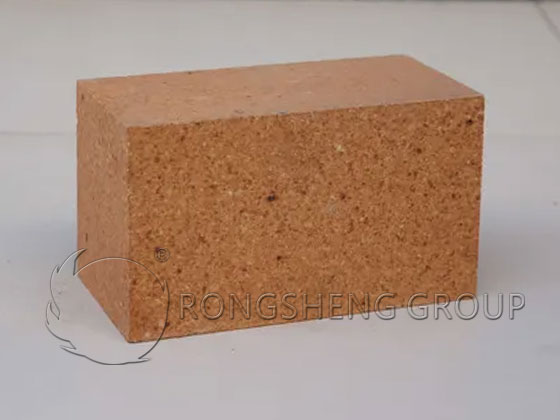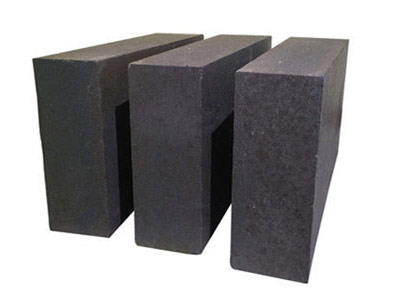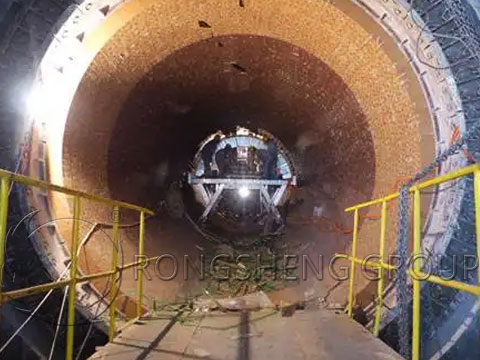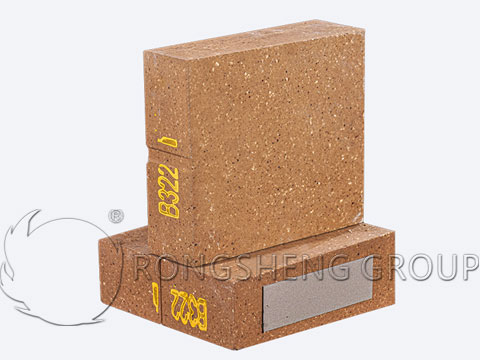RS Cement Kiln Lining Refractory Bricks for Sale. Commonly used refractory bricks in cement kilns include low-temperature and alkali-resistant bricks, and high-temperature and high-temperature Silicon Carbide Mullite Bricks. Cement Kiln Lining Refractory Bricks … For Free Quote at inquiry@global-refractory.com.
Alkaline Refractory Bricks for Cement Kilns
Why Use Alkaline Refractory Bricks for Precalcined Cement Kilns? During the calcination process of the pre-calcining kiln clinker, a large amount of melt (liquid phase) appears in the kiln material from the back end of the upper transition zone. Some ingredients in the kiln material are calcined in the melt-through of the raw maturation material until it is out of the kiln. Within this range, alkaline refractory bricks that withstand high temperatures can meet their process performance requirements. The masonry length of alkaline refractory bricks is about (6~10)D of the kiln diameter, which is also the most severely damaged part of the lining brick. The use of the lining brick in this part directly affects the operation rate of the kiln. Therefore, the technological progress product performance, and output status of basic refractory bricks are paid attention to by people.

Magnesia Chrome Bricks for Cement Kiln
At present, the alkaline refractory bricks used in the pre-calcining kiln are mainly spinel magnesia bricks that directly join magnesia-chrome bricks and magnesia-aluminum bricks. This article mainly introduces the direct bonding of magnesia-chrome bricks. Directly Bonded Magnesia-Chrome Brick, Brief Introduction of Directly Bonded Magnesia-Chrome Brick for Cement Kilns. Magnesia-chrome bricks appeared in the 1930s. At that time, the performance of silicate-combined magnesia-chrome bricks (common magnesia-chrome) was still relatively poor and was used in traditional rotary kilns. Beginning in the 1960s, there have been direct-joined magnesia chrome bricks (straight magnesia bricks) with better performance.
Due to the high-temperature resistance, melt erosion resistance, redox resistance, mechanical stress resistance, and excellent kiln hanging performance of straight magnesia bricks, after being put into use, it is widely used in the transition zone and firing zone of the preheater kiln. Become the mainstream. In the 1980s, the output and diameter of the pre-calcining kiln were further expanded. In addition, due to the rapid increase in crude oil prices, coal with high ash content and petroleum coke with high sulfur content gradually replaced fuel oil. The high content of alkali sulfur makes the straight magnesia bricks in the upper and lower transition zones of the kiln vulnerable to damage and shortens the service life.
As a result, magnesia-aluminum spinel bricks with strong alkali-sulfur corrosion resistance have been used in the upper and lower transition zones of some large-scale pre-calcining kilns. At this point, the dominance of magnesia bricks began to break. In the late 1980s, some industrialized countries further emphasized the problem of chromium pollution, that is, when magnesia-chrome bricks are used in cement kilns, Cr3+ is transformed into Cr6+ which is harmful to the environment and the human body. Industrialized countries have formulated a series of regulations on environmental protection, sanitation, and cement-related ingredients. Fully monitor the residual bricks of cement kiln magnesia-chrome bricks, the drainage of cement plants, and the chromium content of cement products. In the 1990s, some cement companies in industrialized countries used relatively cheap industrial waste as raw material fuel due to environmental protection needs. Increased the alkali sulfur’s erosion of kiln lining materials, and put forward more demanding requirements for alkali refractories.

To promote the further optimization of magnesia-chrome bricks, super-direct bonded magnesia-chrome bricks with better performance have appeared in the pre-calcining kilns with more severe working conditions. On the other hand, the process of chromium-free alkaline bricks is accelerated to further improve and improve technology. In the 21st century, chromium-free alkaline bricks have completely replaced magnesia-chrome bricks in some industrialized countries and have better performance than magnesia-chrome bricks. It is specifically reflected in the development trend of the further increase in the operation rate of the pre-calciner kiln and the further decrease in brick consumption. In my country, in 2014, the Ministry of Environmental Protection formulated the solid waste production cement pollution control standard, which specified the limit of the pollutant content in cement products, Cr6+, to be 0.05mg/L. Its value is close to that of industrialized countries. It can be said with certainty that the limit value will definitely become stricter over time.
Although restricted by environmental protection regulations, magnesia-chrome bricks are still used by some cement plants due to their excellent kiln-hanging properties and relatively low prices. They are the most consumed variety in cement production. But the general trend is to decline year by year. At present, some people of insight in my country’s cement industry have raised the issue of chromium pollution in some conferences and articles, which has attracted the attention of relevant leaders.At the same time, some design units have reduced or stopped using magnesia-chrome bricks in their drawings. Some large domestic cement groups and foreign-funded enterprises have partially or completely stopped using magnesia-chrome bricks. The above situation greatly reduces the usage of magnesia-chrome bricks. In addition, the fuel used in some areas contains high sulfur content, which intensifies the chemical erosion of magnesia-chrome bricks, forcing companies to reduce or stop using them.
As the country further strengthens the environmental protection of water resources and controls the chromium content in cement. The regulation on the limit value of hexavalent chromium in magnesia-chrome brick residual bricks will be strict with time. In the end, forcing magnesia-chrome bricks to withdraw from the cement kiln, manufacturers that produce magnesia-chrome bricks must arouse great attention. Rongsheng Refractory Manufacturer provides high-quality refractory materials for cement kilns. Including direct bonding of magnesia chrome bricks, magnesia spinel bricks, and various wear-resistant castables. For more information about alkaline refractory bricks, please visit our website: https://rongshengrefractory.com/several-kinds-of-alkaline-refractory-bricks/.

Cement Kiln Lining Refractory Bricks Refractory Bricks for Cement Kiln
For the firing zone of the cement rotary kiln, a stable and strong kiln skin is required. Because it can protect the refractory lining and reduce the heat loss through the kiln body. A few centimeters of stable kiln skin can not only extend the life of the lining material by nearly 100% but also reduce the temperature of the kiln body by several hundred degrees. This means reducing heat loss by up to 25%.
When the local kiln appears thick skin, it is known as “ring formation.” It will hinder the operation of the kiln considerably. The most serious is that it has built an unfixed cross-section of the kiln, which hinders the steady flow of materials and fuel gas into the kiln. Once the kiln skin is looped, it cannot fall off by itself, and the kiln has to be stopped in order to deal with it. Rotary Kiln in the Cement PlantThe rate of kiln shutdown due to loop formation accounted for 80%. The change cycle ranges from once a month to more than once a week. It is for this reason that people have been studying methods to prevent or deal with kiln skin loops that hinder operation.
Therefore, it is considered whether it can be prevented by selecting suitable refractory materials, or at least the occurrence of ring formation can be reduced. Classification and Location of Kiln Skins and Ring Formation. According to the material flow, the kiln skin and ring formation in the preheater, rotary kiln, and cooler are divided into different types. According to these classifications, the raw material loop occurs in the decomposition zone where the material temperature is between 800°C and 1200°C. The sintering ring occurs at the front end of the firing zone where the material temperature is 1200~1350℃.
The clinker ring occurs at the end of the firing zone where the material temperature is 1200~1400℃. Another obstacle to the formation of kiln skins is the slurry ring on the wet long kiln. The skin on the suspension preheater and decomposition belt of the rotary short kiln, and the well-known “clinker mushroom tumor” on the cooler inlet chute. Refractory Material Affects the Possibility and Limit of Ring FormationThe chemical atmosphere in the kiln and the normal operating conditions affect the desired formation of the kiln skin and cause the trouble of material ring formation. However, refractory materials can also affect the stability of the kiln skin due to their different bonding strength. Experiments have shown that dolomite bricks have the strongest bonding force, followed by magnesia-chrome bricks and direct-bonded magnesia-chrome bricks (MgO content 60~70%), and magnesia spinel bricks (Almag 85) are the weakest.

Magnesia Spinel Bricks for Cement Kilns
Magnesia Spinel Bricks Manufacturer. The “Mineral-Chemistry” study confirmed that the bonding force at the interface between the kiln skin and different bricks was measured by the mineral composition of the “kiln skin-brick” interface and the liquid “wetting” angle. Therefore, a layer of C3S enrichment zone with high refractoriness is formed on the interface between kiln skin and brick. This layer of C3S also contains tricalcium aluminate and ferrite phases. If the temperature drops below the stability limit of C3S (1250°C), C3S usually decomposes into C2S and secondary free CaO. But obviously, the incorporation of foreign ions, such as MgO, will stabilize C3S. Due to the decrease of the local CaO/SiO2 ratio in the area close to the surface of the brick, a C2S-rich boundary layer is formed, which results in a lower bonding force on the magnesia-chrome brick. In the presence of Cr2O3, C2S is partially stabilized.
However, if the interface temperature drops, that is, if the kiln skin becomes thicker, β-C2S will be converted to γ-C2S, with a volume expansion of 10%, resulting in “pulverization” and weakening of the binding force of the ring to the lining. So that the knot loops fall off. Magnesia spinel bricks have a particularly strong “chalking” effect. Although a C2S-rich layer is formed, the liquid phase obviously does not infiltrate the bricks to such an extent. On the other hand, there is no adequate amount of ions that can stabilize β-C2S. If the temperature drops in the contact zone, it is easier to form γ-C2S, so that the ring of materials will fall off. Because the magnesia spinel brick has a higher control of Fe2O3 content, it will not generate a C2S layer enriched with iron-free aluminate. The situation of magnesia chrome brick is the opposite because it contains higher Fe2O3.
Based on the previous observations, it is clear that magnesia spinel bricks can cause the ring to fall off, or prevent the formation of a C2S-rich ring layer that hinders operation. These loops mainly occur before and after the decomposition zone and the firing zone. Lining with magnesium spinel bricks can also prevent the formation of “clinker mushroom tumors” at the inlet chute of the cooler. As to whether the magnesia spinel brick can successfully eliminate the problem of skinning containing potassium sulfate, potassium carbonate, silica calcite, alkali metal sulfate, and alkali metal chloride, it is still worth discussing.
The looping of slurry in the cyclone, short dry kiln flue chamber, long wet kiln, and skin on the wall and top of the hot gas chamber of the grate preheater are all such problems. Obviously, the lining made of Almag85 grade magnesia spinel bricks shows that it can effectively prevent the formation of clinker rings, sintered rings, and raw material rings. Learn more about the magnesia alumina spinel bricks from Rongsheng Refractory Manufacturer.

